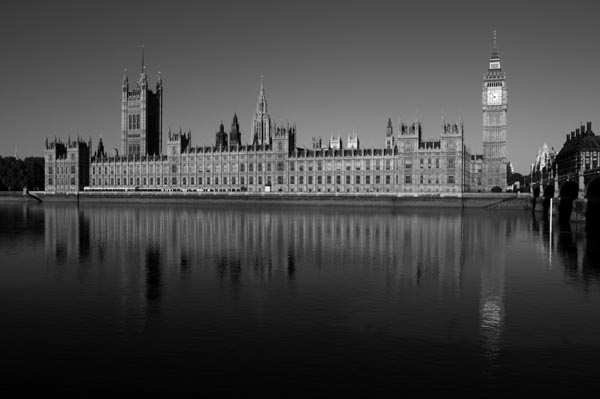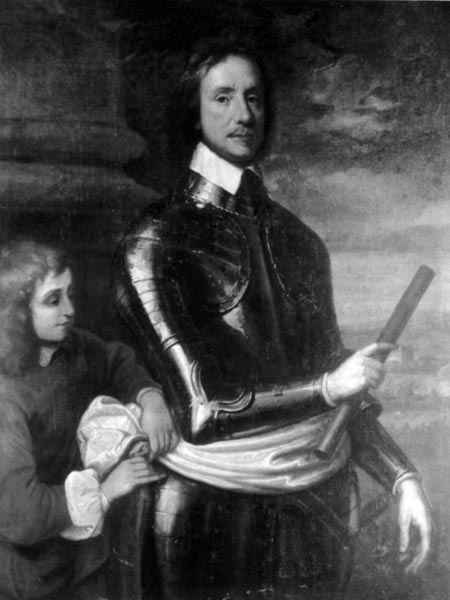John Cooke was the son of a working man from Leicester – and the solicitor general who prosecuted Charles I for tyranny. A new book tells his tale…
Book review: The hidden history of one of the unsung heroes of the English revolution
WORKERS, NOVEMBER 2008 ISSUE
The Houses of Parliament are one of the busiest tourist attractions in the whole of Britain. They are considered remarkable for many reasons; in fact they are remarkable only really for one. That is the statue outside the building of Oliver Cromwell. He was the only person – not Guy Fawkes, as the popular joke runs – who entered Parliament with honest intentions. Where Fawkes would have destroyed Parliament to subject England to a Catholic dictatorship, Cromwell entered Parliament in 1653 ordering it to “take away this bauble”, meaning the crown of England.

|
Hero though Cromwell is, his lieutenants and comrades, just as heroic, are mostly unknown to us. A remarkable recent book, The Tyrannicide Brief, by the lawyer Geoffrey Robertson, aims to put the record straight in respect of one of the bravest yet least well known.
Following Charles I’s declaration of war on the people of England, two civil wars had to be fought, during which more people were killed in proportion to the population than in any other war in which Britain has been involved before or since, including the First World War. When Parliament had finally been successful and Charles had been captured, Parliament had to take a critical decision. In order to prevent Charles launching a third civil war, he had to be put on trial. And in order to put him on trial, a lawyer had to be found who would draw up a case against the king and who would prosecute at a trial. No king had ever been put on trial publicly anywhere before and the trial was indeed remarkable. The man chosen to undertake this fearsome task is our unsung hero. He was John Cooke, the son of a working man from Leicestershire who became solicitor general of the English Commonwealth.
High drama
The trial was the greatest spectacle in legal history bar none up to that point. The (still existing) great hall of Westminster was packed with Londoners and the trial itself was high drama. Cooke, who was standing next to the king, opened proceedings by addressing the court. At this point, Charles Stuart hit the lawyer with his cane. Not only did this not deter Cooke, but neither did a second strike, and a third which was so hard that the silver tip of the cane flew off. Charles then commanded Cooke to stop his address and to pick up the tip of the cane. As Geoffrey Robertson says, “If Cooke had yielded, the entire enterprise would’ve faltered. But the barrister ignored the king and continued to address the court. Under Cooke’s wounding words, the king seemed to shrink into a small, cranky prisoner with dirty hair. In that character, slowly and painfully, under the astonished gaze of his people, the king stooped to pick up the silver tip from the floor at Cooke’s feet. There were gasps: Cooke paused for the significance of the moment to sink in.”
History had changed. A king who thought he was a god was unable to command.
The king’s trial, contrary to the way it has been recorded in history, was fair to a fault. It lasted for weeks, the king had recourse to whatever lawyers he wished, and had unlimited time to prepare.

|
| Oliver Cromwell, hero of the English Revolution – but not the only one. |
Following Cromwell’s death in 1659 the disgusting Colonel Monck, one of the Commonwealth’s leading soldiers, led a betrayal that brought Charles’s son into power. This new Charles, Charles II, was explicitly brought into power because he said he wanted to “obtain peace without effusion of blood.” He wanted London to know “how far we are from the desire of revenge”.
As soon as Charles II became king he broke all his promises. The leading republican soldiers were hunted down and, illegally in John Cooke’s case, kidnapped and imprisoned. Cooke and many others were held in chains for months, without access to the means to defend themselves and their so-called “trial”. They were allowed no legal defenders, not even pen or paper. They became so ill and infected that the “trial” had to be held outdoors so the judges wouldn’t become ill. They were berated and abused by their judges in the same way that Charles I had tried to berate Cooke. They defended themselves bravely, but were of course convicted of treason.
Charles I had been convicted of treason and had suffered the fate reserved for royalty and the nobility found guilty of such a crime, beheading. Cooke and the republicans were not noble enough simply to be beheaded, the most humane way of killing someone in the 17th century and the sentence meted out to Charles I. Instead they were sentenced to what history has called hanging, drawing and quartering. Robertson records what this death meant in the case of John Cooke.
Butchered
“With a noose around his neck, Cooke looked up at clouds heavy with rain and stepped into thin air. The rope pulled tight about his neck and he briefly blacked out, but the hangman quickly cut the rope and his body crumpled onto the ground. The assistant took the tongs and pincers and one held a flaming torch. John Cooke was quickly stripped and bent over backwards, as his genitals were cut off with a sharp knife. He was held up, conscious, while they were dangled in front of his goggling eyes before the hangman threw them into a bucket.
“The captain of the guard, egged on by the crowd, ordered that the cowering Hugh Peters (next to be executed, and the only terrified republican) be untied and brought forward, forced to watch the disembowelling. ‘Come, Mr Peters: How do you like this work?’ laughed the hangman. His assistants pulled on the halter that brought the judge (Cooke was a high court judge) forward: the hangman inserted the burning corkscrew into his anus and expertly twisted out the lining of the inner bowel: Cooke was then bent backwards again to watch as his entrails were put to the torch.
“The executioner would normally at this point end the excruciating suffering by cutting out the heart, but this executioner wanted Peters to observe Cooke in conscious agony for as long as possible. The stench became sickening as the yards of bowel were slowly burned – ladies clasped scented handkerchiefs to their noses as the wind carried the smell to the residential apartments overlooking the gallows. Eventually, Cooke expired: his heart was cut out and exhibited, still pumping, to the approving crowd, the executioner holding it high around the scaffold on his knife before casting it into the bucket.”
Cromwell was of course dead. Had he lived, none of this would have happened. But in their hatred for him, his body was exhumed and thrown into a common pit. He was lucky; the following are the names of the men who suffered John Cooke’s fate:
Thomas Harrison, John Carew, Hugh Peters, Thomas Scott, Adrian Scroope, George Clement, John Jones, Francis Hacker and the soldier keeping order at Charles’ trial, Axtell.
These and others whose names have been hidden are heroes and should be revered as such. They were responsible for the greatest change in Britain’s history (quite apart from anything else, John Cooke was the first person to propose a National Health Service) and we have benefited from what they did. It’s time their names were as well known as Cromwell’s, and we look forward to their statues joining Old Noll outside the houses of parliament.
The Tyrannicide Brief, by Geoffrey Robertson, Chatto & Windus. ISBN – 0-701-17602-4.